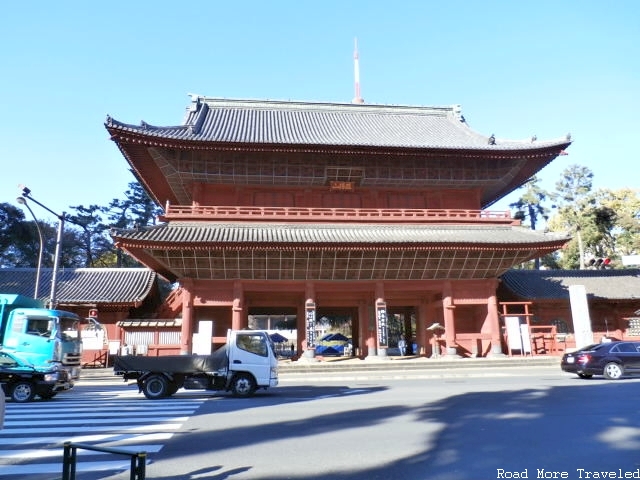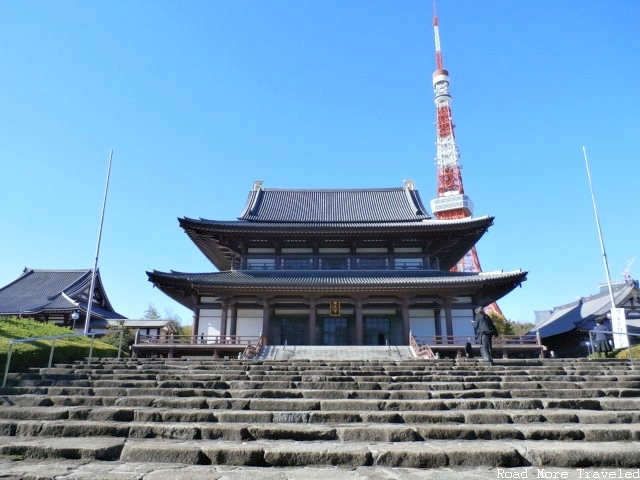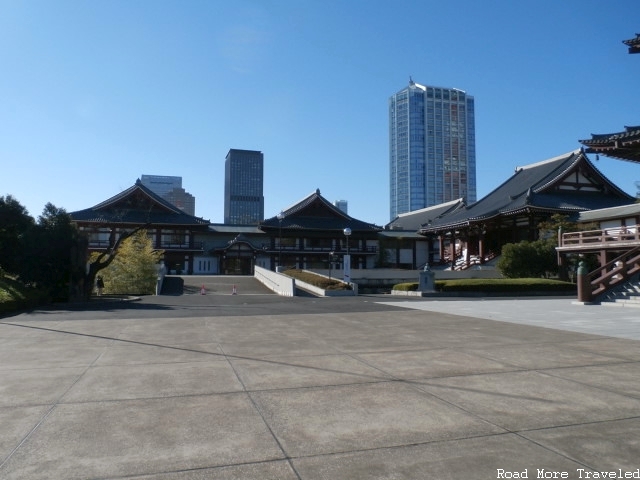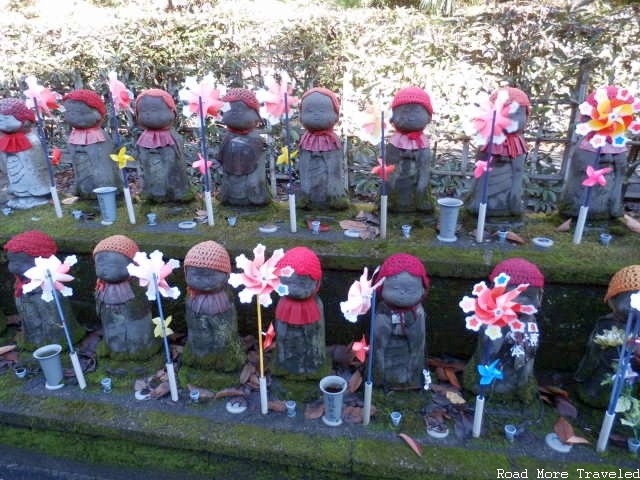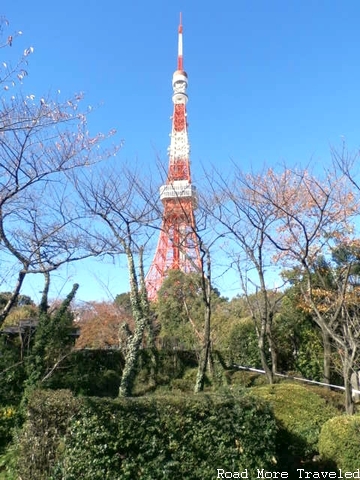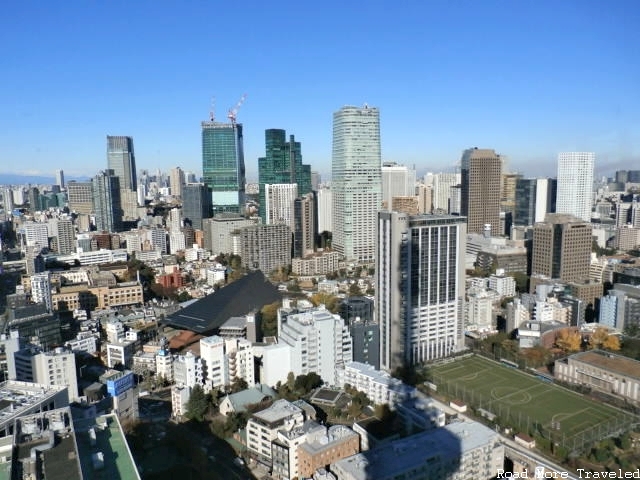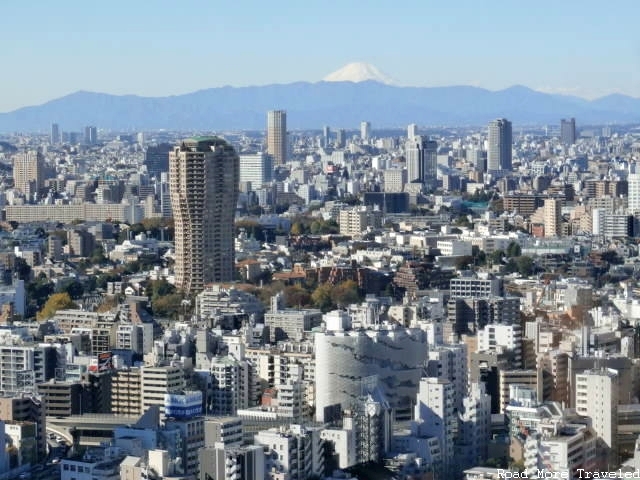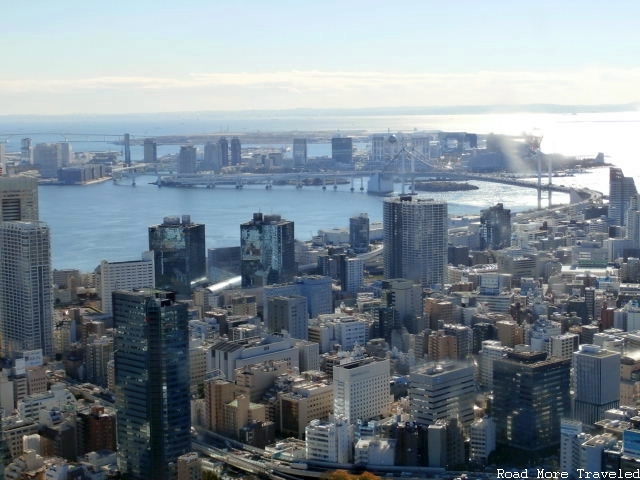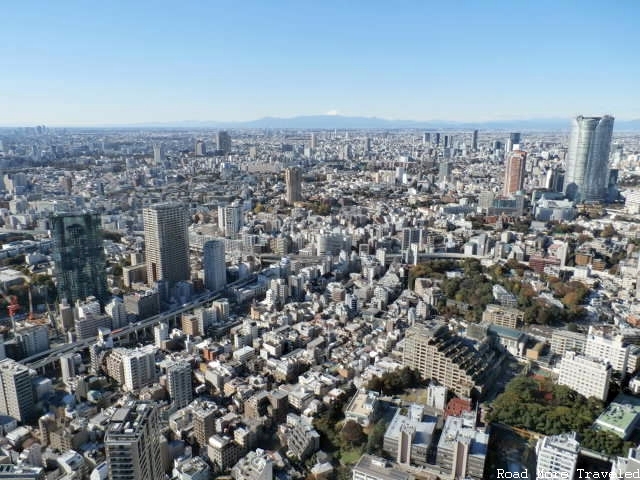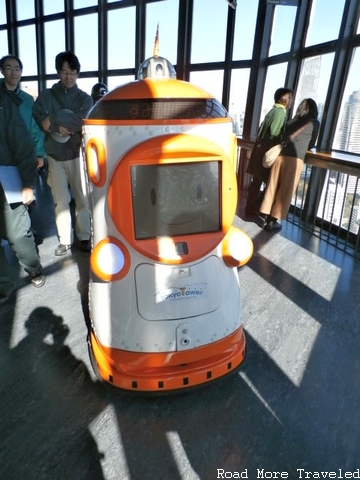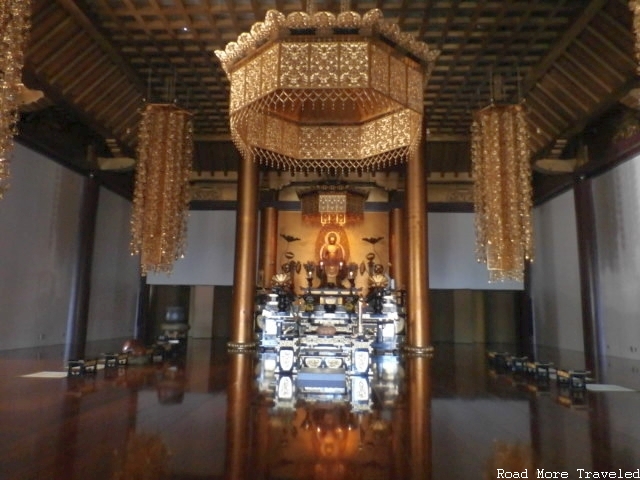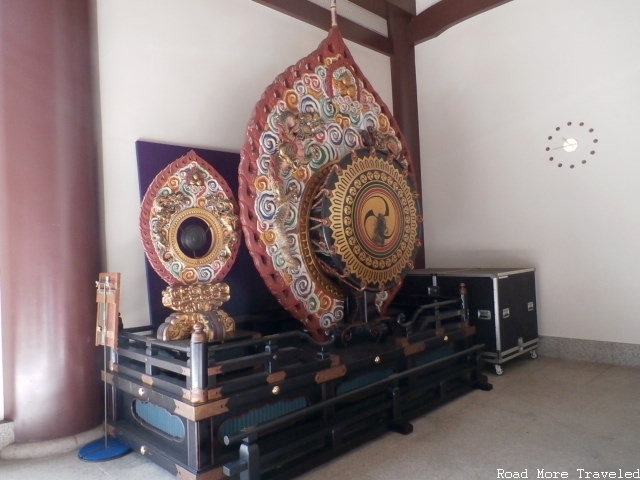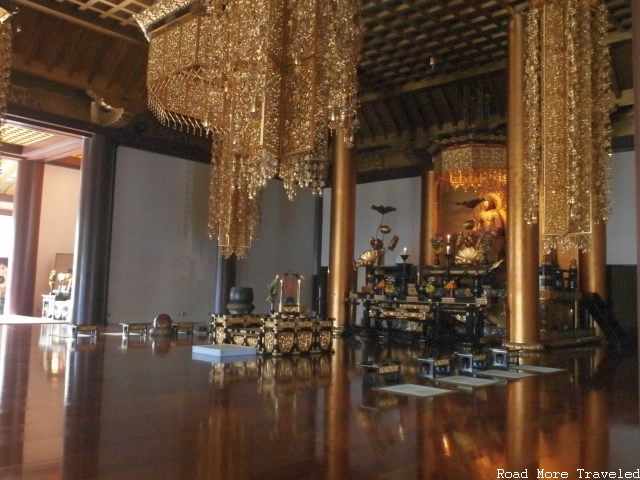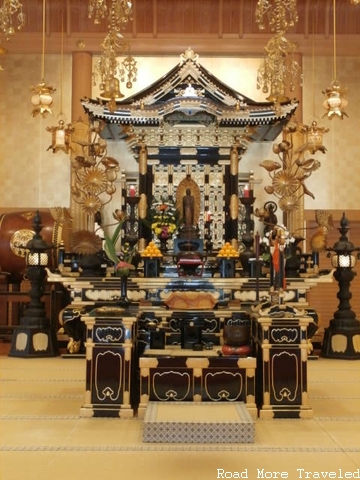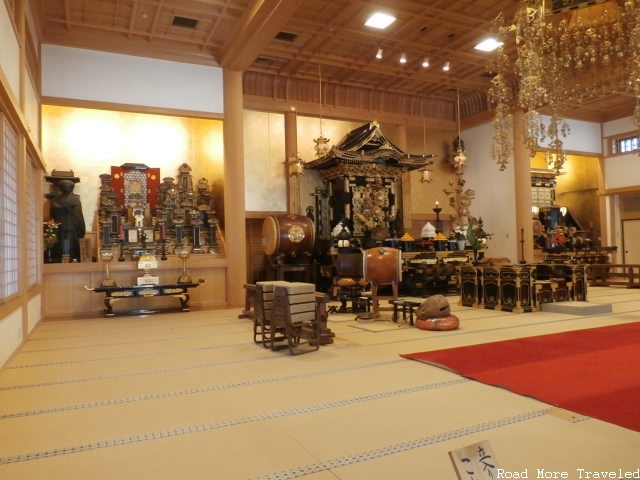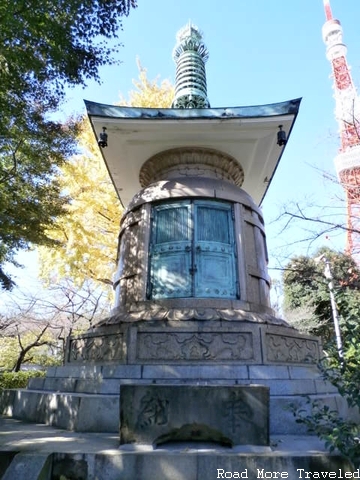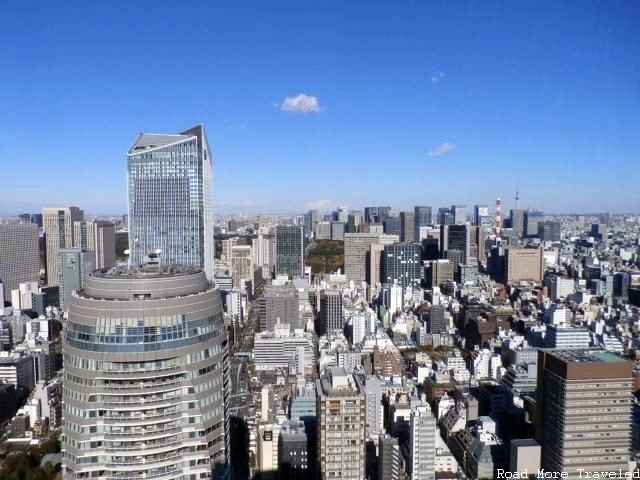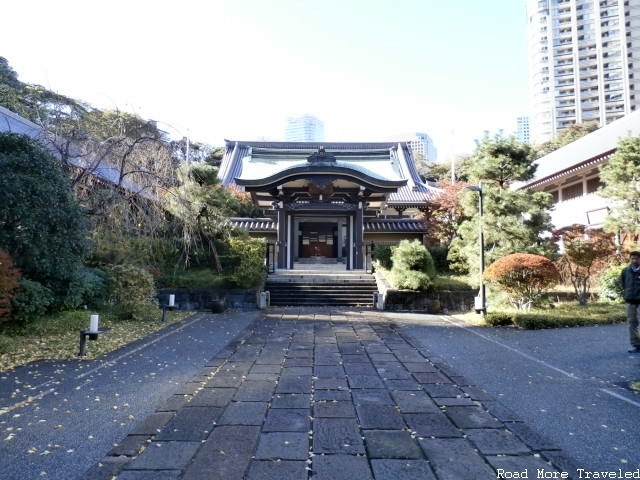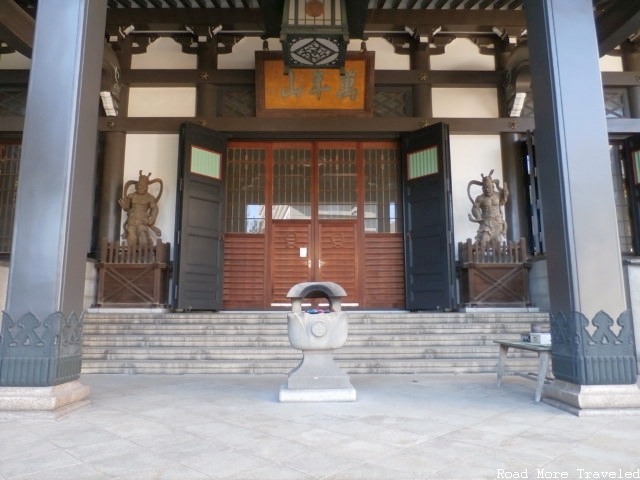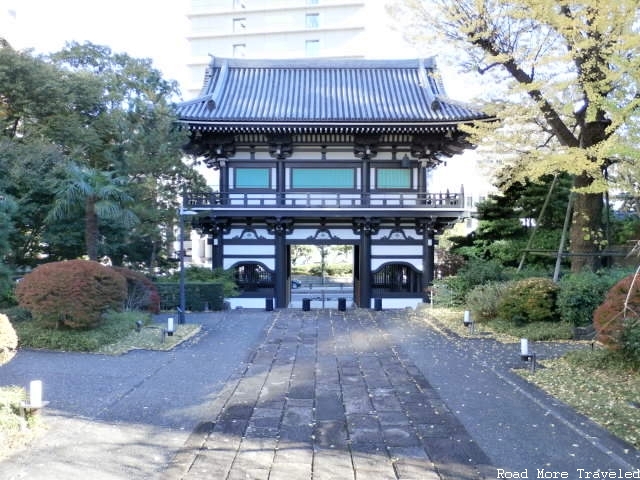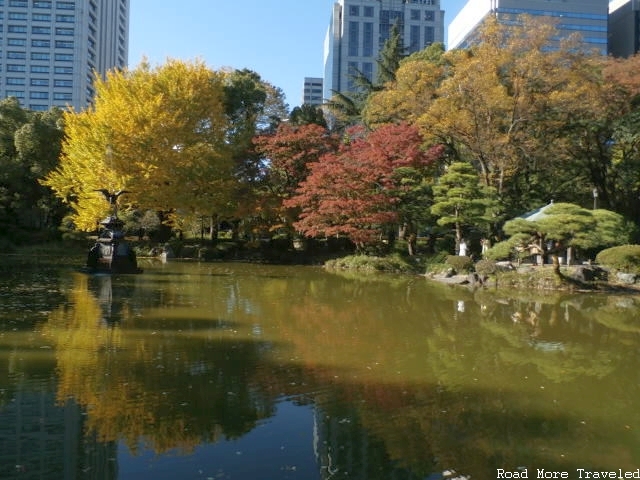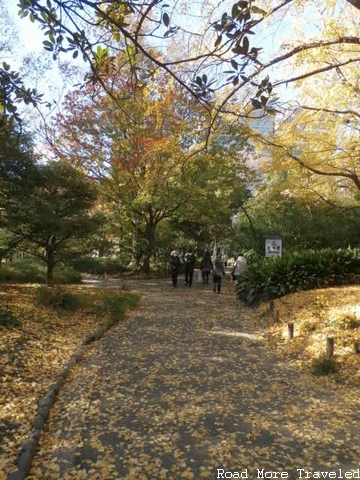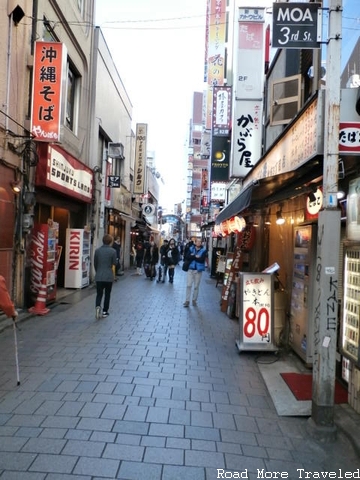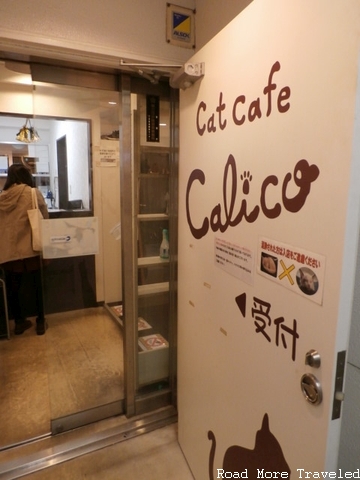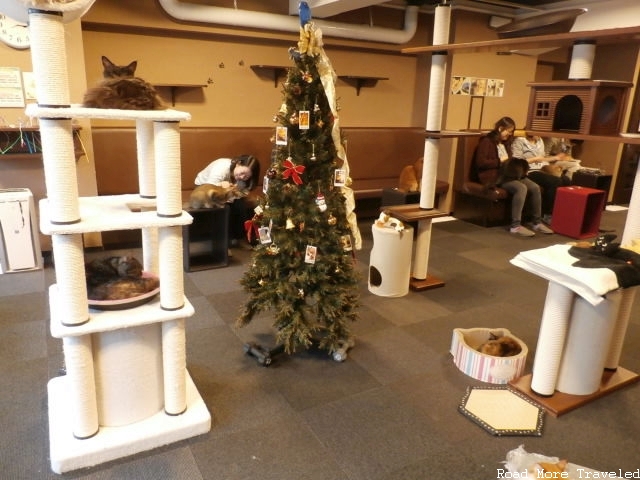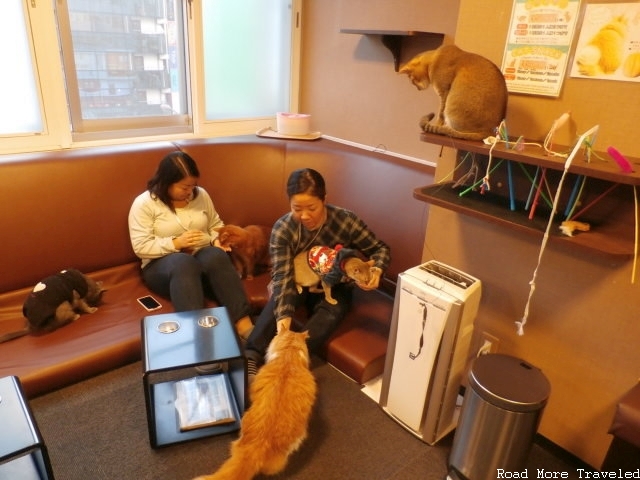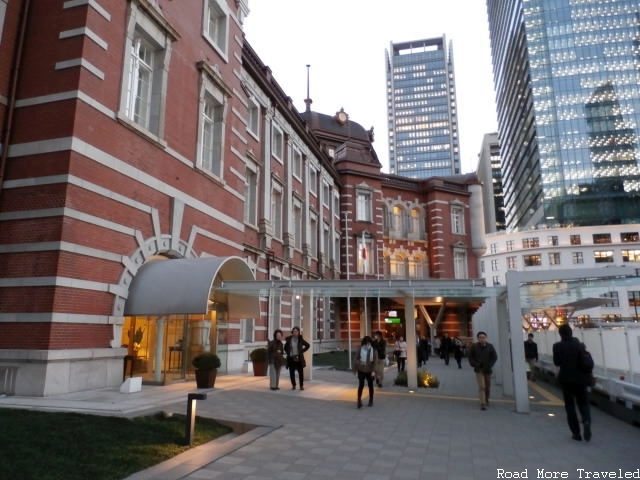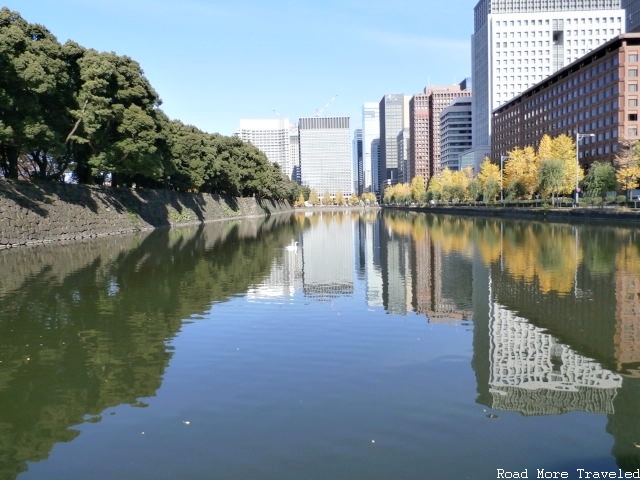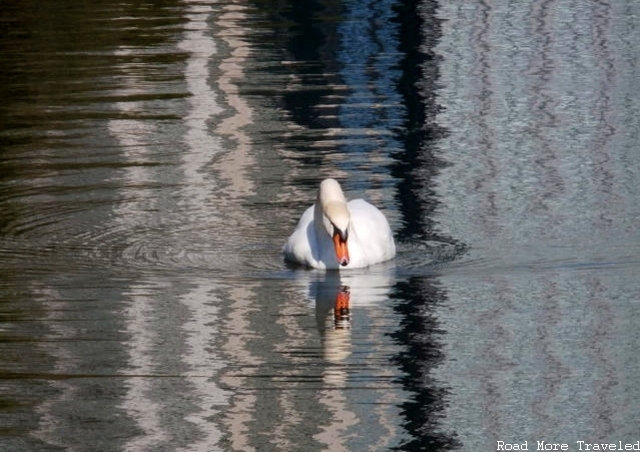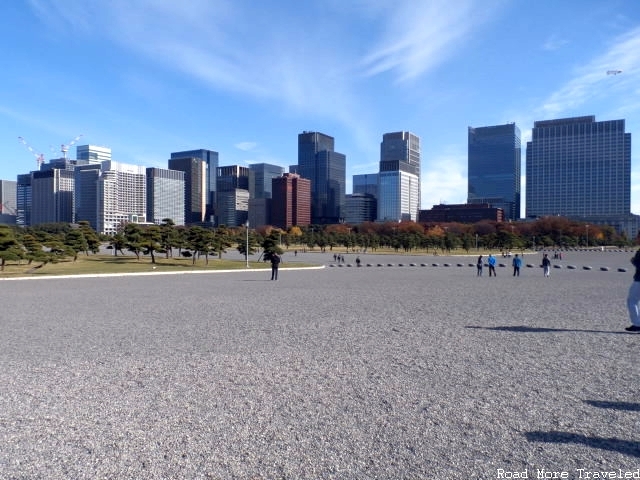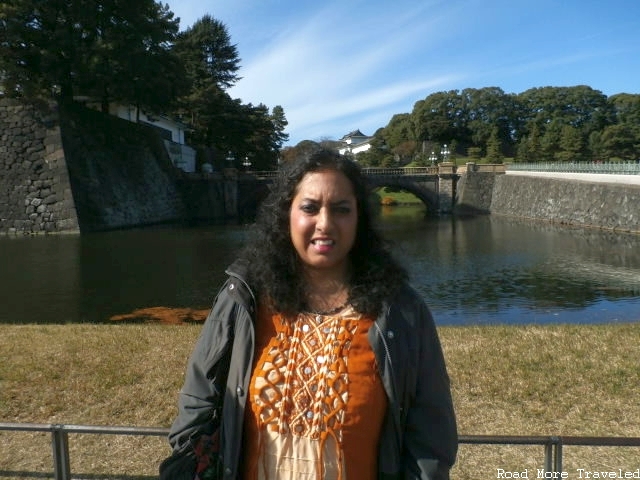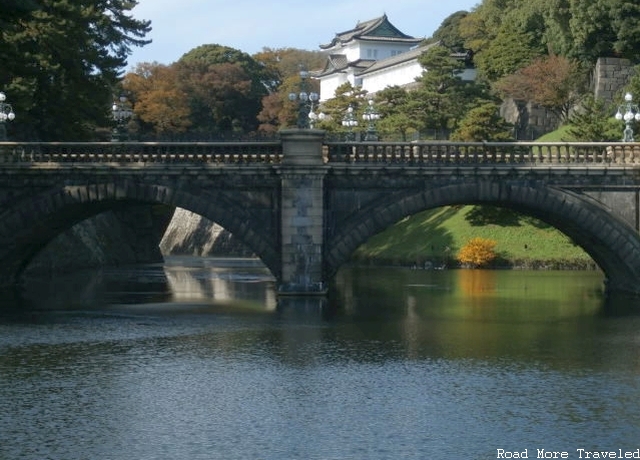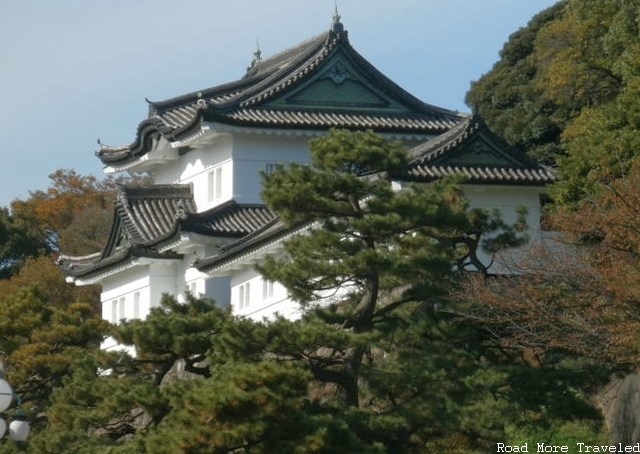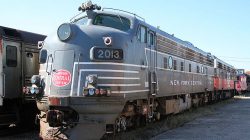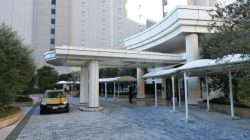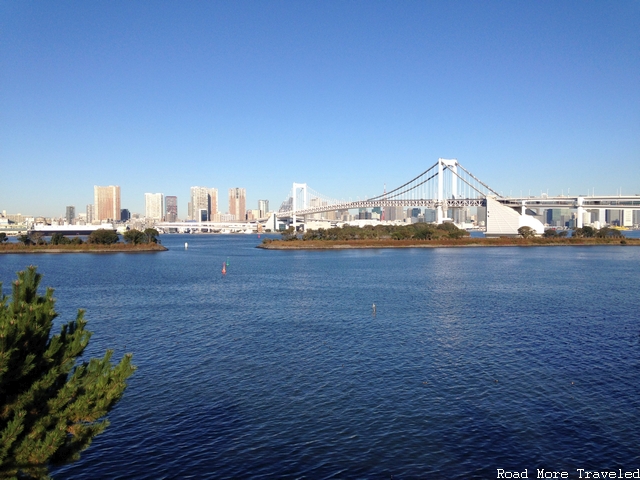
Our total time in Japan would span roughly four days in real time, but with a 3:30 P.M. arrival on Day 1, an all-day excursion to Kobe planned for Day 3, and a return flight necessitating a return to Narita by about 4 P.M. on Day 4, our useable time in Tokyo would essentially be a day and a half. That’s the entirety of Day 2, and slightly more than a half day on Day 4. I worried that jet lag might cause problems on Day 2. Luckily, both my wife and I dodged the bullet this time.
Dates of visit: Friday, November 27 and Sunday, November 29
As noted above, our first day was technically Thursday the 26th, but since we didn’t get to our hotel until well after dark, there really wasn’t anything to do except walk around Odaiba a little to find some dinner. So, we waited until Friday morning to really get started. Prita and I did have a handful of things we wanted to check off the list for sure:
- Zōjō-ji shrine
- Tokyo Tower
- Some fancy sushi
- A cat cafe
- Shopping time for Prita
That was a lot of ground to cover, but we’d also try to sneak in a couple of other things if time permitted.
Zōjō-ji shrine
We decided to start off by heading to the Zōjō-ji/Tokyo Tower area. Though technically not part of the same complex, they are a very short walk from each other. When going to Zōjō-ji from Odaiba via the Metro, you actually walk right by the temple on the way. The ride to Zōjō-ji was a fairly easy one, via the Yurikamome line to Shimbashi, then the Asakusa line to Daimon. I say “fairly” easy, because while the trains themselves are fine, the Tokyo subway system is something of a confusing mess of public and private lines. Tickets don’t necessarily trransfer from one line to the next. Tthat is the case with the Yurikamome line, which does not accept Tokyo Metro tickets and vice versa).
Finding a comprehensive map of all lines is a chore, though this is about as close to one as you can get. The Tokyo Metro also publishes an English language map of its system only. I highly recommend keeping a map on your phone for reference if you plan to use the Metro system – and I definitely suggest you do, given how chaotic Tokyo traffic can be.
The good news is, once you get used to the route system, it’s pretty easy to get around. The trains are clean and safe, English signage is plentiful and vending machines have English options, and it’s cheap. Most rides cost between 170 and 400 yen (~$1.70-$3.75) each way per person. Fares are distance-based, so you’ll pay more if you’re frequently going from one end of Tokyo to the other. If you need to change lines mid-trip, you will need to buy a “transfer” ticket, but don’t worry, at the vending machines, just enter your starting and ending points and it will generate the correct type of ticket.
CAUTION: vending machines ONLY accept chip & pin credit and debit cards, so if you have a chip & signature card, it WILL NOT work in the machines. Carry some cash to pay for Metro fares, or if you really want to use a non-PIN credit card, you can go to a customer service desk and buy it there.
Anyway, with that out of the way, our ride to Daimon station took about 25 minutes, and a little over 5 minutes of walking brought us to the entrance to the Zōjō-ji shrine, the Sangedatsu Gate. Admission to the shrine complex is free.
The gate, built in 1622, is the only structure of the temple complex to survive World War II. Everything else within was reconstructed after the war. After you pass through the gate, you’ll immediately see the Main Hall in front of you, with Tokyo Tower providing an impressive backdrop.
The courtyard at the top of the first set of steps provides a nice view of the Minato skyline behind the auxiliary temple buildings.
On the other side is a pathway that leads to the temple gardens. A walkway lined with hundreds of miniature stone statues, all dressed in caps and with paper flowers in front of each one, immediately caught my eye.
A plaque explained that this was the “garden of the unborn children”, a memorial to babies that died before birth. Parents can choose a statue, then decorate it and make an offering to Jizō, who in traditional Japanese culture was believed to be the guardian of unborn children. It’s definitely a somber place.
Tokyo Tower
If this seemed like a quick visit – not to worry, I’ll have more on the shrine a little later. We decided we’d see Tokyo Tower first, then come back and spend more time exploring the shrine afterwards. So, we headed up the hill to the entrance to the tower, seen here from the gardens of the shrine.
If you think Tokyo Tower bears a resemblance to the Eiffel Tower, you’re not imagining things. The tower, completed in 1958, is modeled after the Eiffel, though is considerably taller at 333 meters. It was actually the tallest structure in Tokyo until 2012, when it was bested by the Tokyo Skytree. There are two separate observatories in the tower, one at a height of 150 meters, and a second “special observatory” at a height of 250 meters. The entrance fee is 900 yen (~$8.65) for the main observatory, or 1,600 yen (~$15.50) for both the main and special observatories. Naturally, with the weather as spectacular as it was, we bought tickets for both.
The lower observation deck has pretty decent views of the city.
The best part of this deck, though, is the coffee shop. Not so much because the food and coffee is amazing, but because it’s pretty darn cool to sip a cup of coffee while taking in this view. If you want the best views, though, you need to pony up for the higher deck. When it’s a clear day, you enjoy some truly outstanding views of the city, along with Mount Fuji in the distance.
Fuji-san looming over Tokyo
View of Rainbow Bridge, Odaiba, and Tokyo Bay
Another city panorama with Mount Fuji
There was also this interesting robot…um…rolling around and saying hi to everyone.
Besides the observation deck, there is also a large shopping area and food court on the lower levels. Most of the stores sell trinket-type stuff, and the food court is actually surprisingly decent for a food court at a tourist attraction. You can get a decent bowl of ramen pretty cheap, which I’ll discuss in a future post.
Back To Zōjō-ji
It was still too early for lunch, though, so we went back to Zōjō-ji to explore it further. The shrine moved to its present location in 1598, and shortly thereafter, reached its zenith. Archaeologists estimate the temple complex, consisting of the Main Hall and several satellite temples, covered an enormous 826,000 square meters and housed nearly 3,000 priests. The temple began a long period of decline after the end of the Tokugawa era. The World War II bombardment of Tokyo destroyed most of the complex, officially ending its dynasty. What you see today covers only about 200 square meters. It is still a practicing Buddhist temple, and visitors are free to walk around and observe. (However, please be quiet and respectful if you are just there to take photos). Having seen the Buddhist temples of Thailand, the interior is quite similar.
Behind the main hall is a garden, where you can see Tokyo Tower in the distance. You can also walk to the edge of the Tokugawa Mausoleum, which houses the graves of 6 of Japan’s 15 shoguns.
Unfortunately, we couldn’t enter the mausoleum area itself, as it is only open to the public on weekends and holidays. The term “mausoleum” is something of a misnomer, however; it’s really just a walled-off area containing the six graves.
Lunch, a Small Shrine, and A Walk in the Park
After spending some time on the shrine grounds, it was time for lunch, and we decided to use this opportunity to get our fancy sushi at “Tempura & Sushi An” at XEX Atago Green Hills. I’ll review our experience in a later post, but I’ll just leave you with this for now. The restaurant is located on the top floor of Mori Tower. Sushi with a view? Yes, please.
After lunch, it was time for a leisurely walk towards the city center to walk off all that sushi. Just down the street from Mori Tower is a small shrine. You’ll actually find several of these hidden seemingly randomly throughout Tokyo. The shrine itself appeared to be closed, but we spent a few minutes taking pictures of the beautiful grounds.
From there, we headed towards Tokyo Station, passing through Hibiya Park along the way. This is a gorgeous park, an oasis of calm in an otherwise busy city. With it being late November, the fall foliage was in full display, adding to the natural beauty.
The Tokyo Cat Cafe Craze
From Hibiya Park, it is only a short walk to Tokyo Station, where we needed to take care of two things: 1) buy Shinkansen tickets for our trip to Kobe the next day, and 2) catch the Metro west to our next destination, the Calico Cat Cafe in the Shinjuku area on the west side of Tokyo. Shinjuku has a reputation as a hectic, crowded shopping area. Surprisingly, though, I found the streets relatively empty.
For that matter, I was afraid of how congested Tokyo would be, but during our visit, it wasn’t bad. Maybe it was the time of year (Thanksgiving isn’t tourist season in Japan), or we would have seen the mega-crowds if we had been out and about a little later in the evening. But I actually found Fisherman’s Wharf on a Saturday to be far worse than Tokyo in the crowd control department.
Anyway, what exactly is a cat cafe, and why does Tokyo have so many of them? First, understand that the Japanese are obsessed with cats. The “neko” has long been considered a good luck charm, so culturally, cats are afforded lofty place in society. But Tokyo is a tough place to own a pet, given the city’s density and the small apartments. And so, enter the cat cafe, a coffee shop filled with cats where the cat fanatic can spend time playing with the kitties while sipping a latte.
The Calico Cat Cafe is one of the city’s largest, spanning 2 levels and housing roughly 50(!) cats of various sizes and colors. An entry fee of 1,200 yen (~$11.50) gives you one hour of cat time. You can buy drinks, snacks, and cat treats for a nominal fee. Of course, cats being cats, if you don’t have any treats, they’ll most likely ignore you. If you’re a crazy cat person like me, you absolutely must visit one.
We headed back to Tokyo Station after our hour with the cats. Unfortunately, I realized on the ride out to Shinjuku that I bought my Shinkansen tickets for the wrong day. That meant a stop at the customer service desk on the way back. By the time we were done, on our brisk walk from Tokyo Station back to Shimbashi (a little less than a mile), it was too dark for pictures. I managed one decent shot of the historic Tokyo Station building, though.
A Short Visit To the Imperial Palace
On Sunday, we got a bit of a later start than we preferred. We didn’t get back to our hotel room until a quarter to midnight after our trek to Kobe, so we didn’t get going until after 9. Shopping ended up taking a good part of the day, so we only had time for a brief visit to the Imperial Palace East gardens to walk around. You could probably spend an entire day exploring the gardens and touring the palace itself, but unfortunately, we wouldn’t have time. The garden provides excellent views of the Tokyo skyline, and a flock of swans living in the moat surrounding the garden makes for some nice nature shots. Admission to the gardens is free, and it is a 10-15 minute walk from Tokyo Station.
The gardens also provide a good though distant view of the Imperial Palace. Formerly known as Edo Castle, the Imperial Palace is the official residence of the Emperor of Japan. The current version you see today was built in 1888. Given its location in Central Tokyo, popular rumor has it that the value of the palace grounds exceeded the value of all of the real estate in the state of California during the height of the Japanese property bubble in the 1980s. The stone bridge located at the edge of the East Garden makes for a great background for palace photos.
If you want to see more of the palace, you can take a guided tour of the grounds. You must book tours in advance; a link is provided at the bottom of this page. The public may access the inner grounds just two days of the year – January 2nd (New Year’s Greeting) and December 23rd (Emperor’s Birthday).
Final Thoughts on Tokyo
I really wished we had more time to see more of the city, but then again, a day and a half in one of the world’s great cities is better than nothing. I was pleasantly surprised that it wasn’t the nonstop commotion I had expected. While I expected the unpleasantness of Mumbai, it felt closer to L.A. That might have had as much to do with the time of year we were visiting as anything else. I was also surprised that Tokyo, and Japan in general, weren’t nearly as expensive as I was expecting. Hotels were pretty ridiculous, but everything else was about on par with a large American city. And of course, we lucked out big time with the weather, sunny and mid-50s the entire time we were there.
In my next installment, read about my experience on the Shinkansen high-speed train to Kobe.
Note: This post is part of my trip report series about our trip to Japan in November, 2015. Click here for the introductory post and trip report index. Photo at top: view of Tokyo skyline and the Rainbow Bridge from the Odaiba waterfront.


